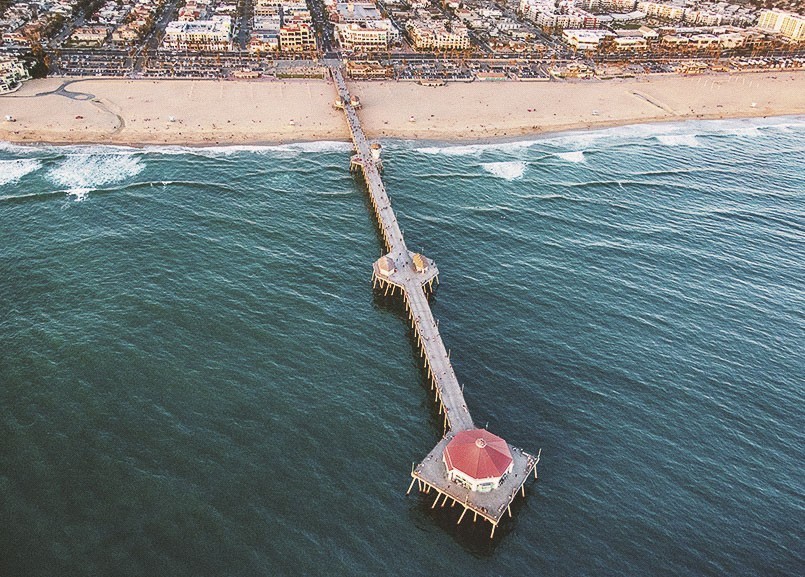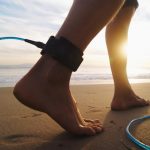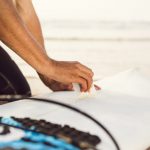There are many things to consider when learning how to surf. One of the most important things is learning how to read a surf report. Surf reports can give a surfer all the information needed about the current surf conditions in his or her area. Understanding the information can paint a good picture of what the surf will look like. This is important because surf conditions could go from really bad to really good within hours. Knowing how to read a surf report ensures you will avoid the bad conditions and spend all your time in the water with favorable surf conditions.
There are five major things to look for in a surf report. They are swell direction, swell height, period, wind, and tide. If you can learn to understand these five items then you should never miss a good day on the water!
Where do Surf Forecasting Sites Get Their Data From?
All surf forecasting websites retrieve at least some of their data from the same source. This data is provided by an American agency called the National Oceanic and Atmospheric Administration (NOAA). This is a government-funded service and provides the data for free, allowing surf forecasting websites to collate what data they wish and display it in a format that is useful for surfers. The main players in the surf forecasting world are Surfline and MagicSeaweed. Each use data provided by NOAA combined with many other meteorological sources to feed their own unique swell models. Using complex algorithms, mathematics and historical data, these individually unique swell models decipher the information and produce the forecasts we see online.
The Best Surf Report Websites
Before we get any further, it is important to know where to find great surf reports. There are a lot of websites that offer free and paid surf reports for the area in which you live. You will find that some websites are more reliable than others, so it is important to which ones are the best. Keep in mind that all surf report websites are not entirely accurate. However, the best ones are able to forecast surf conditions with a fairly high degree of accuracy.
Surfline
Surfline is the best and most popular surf report website on the internet. They are based in Huntington Beach, California and receive millions of visitors to their website each month. Their site includes surf conditions for almost anywhere in the world, which is a crazy feat in itself. They also offer HD surf cams for thousands of spots worldwide. Surfline’s free version allows you to view these surf cams for 10 seconds at a time. They also have a premium version that allows you to view the cams indefinitely. Their premium membership costs $95 a year (or $7.99 a month). This membership also includes more in-depth surf forecasts, and LOLA Wave Models that will allow you to gain an edge on when and where to go surfing.
MagicSeaweed
MagicSeaweed is another popular surf forecast website used by hundreds of thousands of surfers around the world. They are based out of Devon, England and consist of a team of oceanographers and meteorologists working hard to provide you with the most comprehensive surf forecasts. Although they don’t forecast as many surf spots as Surfline, MagicSeaweed has surf reports for over 5,000 beaches and point breaks around the world.
MagicSeaweed uses a star rating system to rate each day. Five stars means you better call in sick for work because it is going to be awesome. One star means get your butt to work and don’t even bother going out. Along with the star rating system, their reports are very intuitive and easy to follow. They use color coding to bring out the most important parts of the report. MagicSeaweed doesn’t have quite as many surf cams as Surfline, but it does have cams for the most popular surf spots around the world. If you are a beginner want to learn how to read a surf report in greater detail, then MagicSeaweed is for you. Their pro membership is only $28.99 a year (or $2.89 a month) and will provide you with 16 day surf forecasts and tons of advanced charts and tools.
Huntington Beach
We’ve decided to teach you how to read a surf report for one of the world’s most famous surf spots; Huntington Beach. Huntington Beach holds a ton of history as it has been the site for hundreds of surf contests over the years. The fall, winter and spring are the best times to surf Huntington Beach. If you attempt to surf this spot during the summer months you will find it to be jam packed with other surfers, body boarders, and swimmers. Unfortunately, surf reports do not show how busy the waters are. Luckily, most surf forecasting websites have webcams to help you decide if you want to venture out into the busy waters.
Swell Direction
The first thing to look for in a surf forecast is the swell direction. This tells us which direction the swell is coming from. This is important because often times there are land masses, like peninsulas or islands off the coast that can block swells coming from certain directions. One of the main factors that affects the swell direction at Huntington Beach is the Pier. As you can see in the surf report above, the swell direction is coming in from the southwest. When the swell is coming from this direction, it is best to surf on the south side of the Pier. On days that the swell is coming from the northwest, it is best to surf on the north side of the Pier. It is important to check the geography at each location to determine which swell direction will produce the best surf conditions.
Swell Height and Period
The next thing to look at in your surf report is the swell height and period. The surf report above states the primary swell is 1.1 feet at 18 seconds. 1.1 feet is the height of the wave from the trough to the crest while eighteen seconds is the time between two crests. It is important to note these measurements are taken by offshore buoys. This means the conditions may change by the time the wave crashes near the beach.
The swell period directly correlates to how much energy the swell has. A swell with a longer period like, 18 seconds, has traveled from a long distance. This means it has built up a lot of power and speed by the time it crashes near the beach. A swell with a shorter period, such as 8 seconds, doesn’t have a lot of energy and is going to be pretty light by the time it crashes. The most important thing to look at when looking at swell height and period is first the period, and then the swell height.
Wind
After taking a look at the swell direction, height and period you will want to see which way the wind is blowing when learning how to read a surf report. Wind can be placed into two different categories; offshore or onshore. Offshore wind is blowing from the land to the ocean, while onshore wind is blowing from the ocean to the land.
A lot of wind in any direction is not ideal as it can make the water very choppy. This can be very dangerous for surfers of all skill levels. The best surf conditions are when there is no wind at all. If it is a bit breezy, you want it to be blowing offshore. Offshore wind blows against the face of the wave, causing it to build in height and curl over when it crashes. Onshore wind blows against the back of the wave, causing it to curl early and crumble rather than turning into a nice tube. As you can see from the picture above, the wind at Huntington Beach at the time this picture was captured is blowing 6 mph onshore. We can come to the conclusion from what was described above that this wind direction wouldn’t be ideal.
Tide
The last thing to look at when deciphering surf reports is the tide. This tidal report was taken from MagicSeaweed and shows you the exact time of day high tide and low tide will occur. Every surf spot is better at a certain tidal position. For example, both sides of the Huntington Beach Pier are surf-able at any tide, though medium tide is usually best. For this particular day, 7:30AM, 10:30AM and 5:00PM would be the best time to go surfing if all other factors are ideal. This is because the tide is perfect and there is enough daylight to get in a good session. Many tidal diagrams will tell you when the sun rises and sets which can be very helpful information. If you are unsure which tide is best for your spot feel free to ask a local surfer or surf shop.
Tides are controlled by the moon and therefore very predictable. There are two high tides and two low tides every day. Because the way the moon and earth rotate together, the times of the high and low tides will always be 51 minutes later than the day before. Surf reports will give you the times and levels of both high and low tide each day. The tide range, which is the difference between high and low tides for a particular area will also change with the phase of the moon. On a full moon, tides will be extremely high and then go extremely low, while new moons will create moderate to little change in the tide range.
After learning about these five general factors, it will take just a few times out on the water to really figure out when the conditions will be best at your local surf break.








